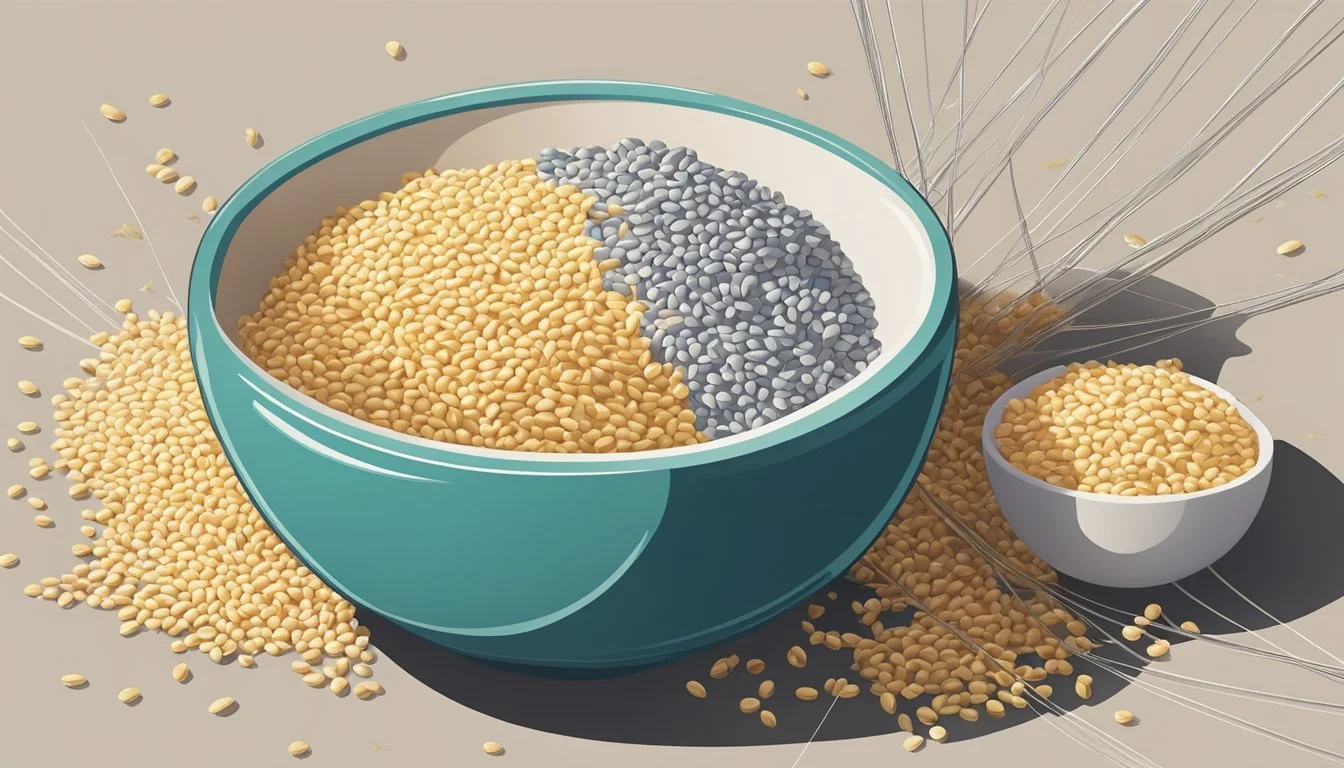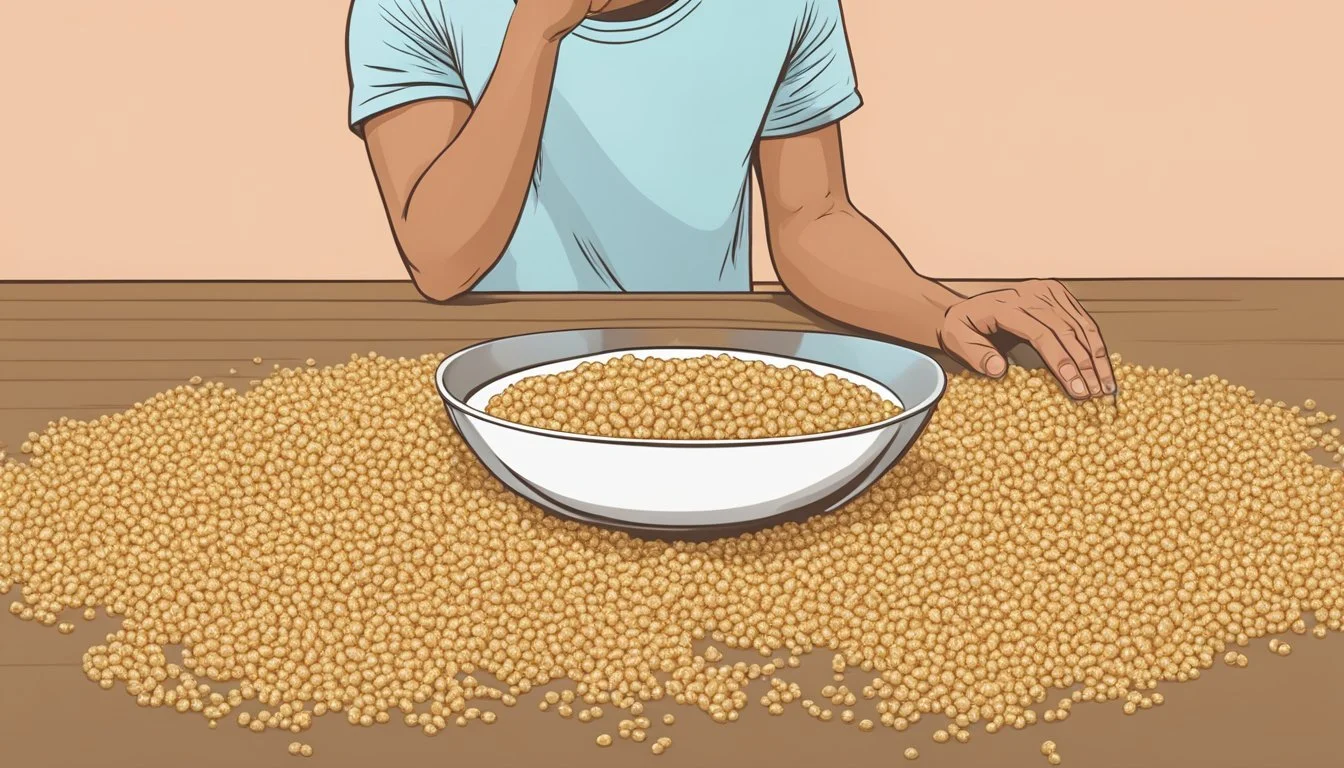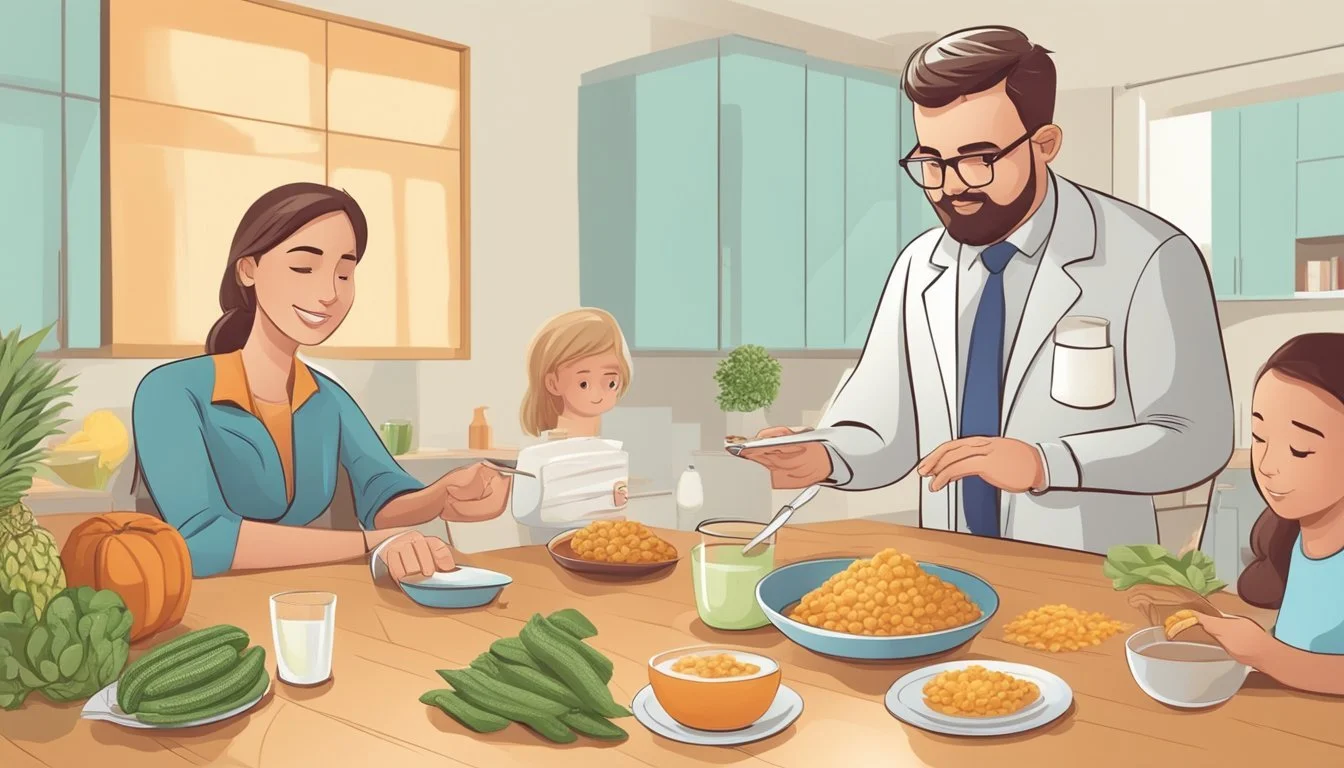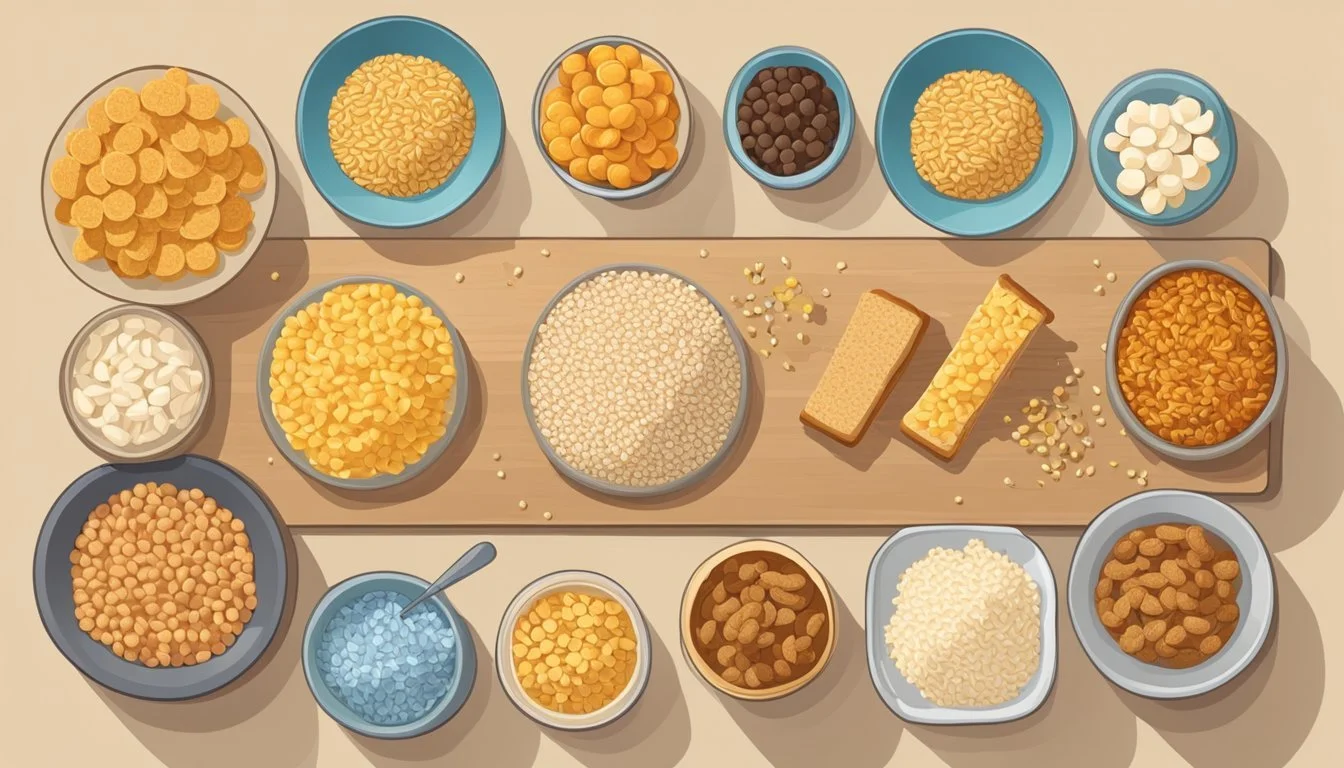The Link Between Grains and Sugar Cravings
Uncovering the Impact on Your Diet
Understanding the relationship between grain consumption and sugar cravings is pivotal in grasping how our diet can influence our urges for sweets. Grains, especially those that are refined, can have a distinct impact on blood sugar levels. When these grains are consumed, they are quickly converted into glucose in the bloodstream, prompting the body to release insulin to manage the sudden spike. This process can lead to a rapid drop in blood sugar, which often triggers the body's desire for quick energy replenishment—hence, the sugar cravings.
The brain's reward system, including the hypothalamus—a small but crucial region that regulates hormones related to stress, pleasure, and hunger—can be strongly influenced by these fluctuations in blood sugar levels. Regular consumption of high-glycemic grains can lead to frequent spikes and falls in blood sugar, which may condition the body to crave sugar more often as it seeks to rapidly restore energy levels. Moreover, maintaining a balanced diet, rich in fiber, protein, and healthy fats, can help stabilize blood sugar and reduce the frequency and intensity of sugar cravings.
Understanding this link underscores the importance of dietary choices in managing cravings and maintaining overall health. By opting for whole grains and a balanced diet, individuals may reduce their sugar cravings and enjoy a more steady release of energy, avoiding the highs and lows that contribute to the cycle of sugar dependency.
The link between grains and sugar cravings is an area of interest, as individuals explore the potential impact of grain consumption on dietary habits. Understanding the connection between grains and sugar cravings is essential, especially as people consider embracing a grain-free breakfast to start the day on a health-conscious note. As individuals explore grain-free comfort foods and the integration of grain-free fish and enticing grain-free charcuterie boards, they may find that reducing grain consumption can positively influence sugar cravings.
The concept of grain-free cravings cheat days allows for flexibility and balance, accommodating occasional indulgences while maintaining a predominantly grain-free lifestyle. This is particularly relevant for grain-free seniors, as dietary choices become increasingly important for overall well-being.
Considering the potential grain-free environmental impact and understanding the link between grains and sugar cravings underscores the dynamic relationship between dietary choices and broader implications. By exploring the impact of grains on sugar cravings, individuals can make informed choices to support their overall health and well-being.
Understanding Sugar and Its Effects on the Body
Sugar plays a dual role in human health, acting as a necessary source of energy while also contributing to various health issues when consumed in excess.
The Role of Sugar in Health and Disease
Sugar's function in the human body is primarily to provide energy. Each cell relies on glucose, a form of sugar, for fuel which is obtained from carbohydrates consumed. However, excessive intake of added sugars is linked to health complications such as heart disease, obesity, and type 2 diabetes.
Heart Disease: High sugar consumption can increase the risk of cardiovascular issues.
Obesity: Sugars, especially from sugar-sweetened beverages, have been connected to rising obesity rates.
Diabetes: High intake can lead to insulin resistance, a precursor to type 2 diabetes.
How Sugar Influences Hunger and Appetite
Sugar is known to influence neural pathways related to hunger and satiety. High-sugar diets can cause a cycle of cravings and appetite spikes. This is because sugary foods often lead to a rapid rise and fall in blood sugar levels, triggering a response for more food intake to regain energy.
The Impact of Sugar on Blood Sugar and Insulin Levels
When sugar is consumed, the body breaks it down into glucose, which enters the bloodstream. The rise in blood glucose levels prompts the pancreas to release insulin:
Insulin is a hormone that helps cells absorb glucose from the blood.
High sugar intake can lead to excessive insulin demand, causing the pancreas to overwork.
Over time, this can result in insulin resistance, a condition where cells respond poorly to insulin's signals, which often precedes the development of type 2 diabetes.
The Psychology of Sugar Cravings
Sugar cravings can stem from complex psychological mechanisms involving neurotransmitters that regulate mood and behavior, emotional states influencing eating patterns, and reward systems that reinforce pleasurable sensations from sugar consumption.
Neurotransmitters and the Sugar Connection
Dopamine and serotonin are key neurotransmitters involved in sugar cravings. When a person eats sugar, their body releases dopamine, which signals pleasure and can lead to a reinforcing cycle of cravings. Similarly, serotonin release, often associated with mood regulation, can be affected by sugar intake, sometimes being inaccurately used as a quick fix to enhance one's mood.
Dopamine: The feel-good neurotransmitter; associated with reward and addiction.
Serotonin: Affects mood, feelings of well-being, and happiness.
Emotional Eating and Sugar Cravings
Emotional eating is a common response to stress, depression, or anxiety, where individuals turn to sugar as a source of comfort. This can establish a pattern where sugar becomes a temporary relief for negative emotional states, creating a problematic cycle that may impact mental health.
Stress: Can trigger cravings for sweet foods as a coping mechanism.
Mood: Influences eating behaviors; low mood may lead to increased sugar consumption.
Reward, Pleasure, and Sugar
The brain's reward system is designed to reinforce behaviors that it finds pleasurable, including the consumption of sugar. By triggering the release of neurotransmitters such as dopamine, sugar can induce feelings of pleasure similar to what is experienced in other forms of addiction. This reinforcement is powerful, making the cycle of cravings and reward-seeking behavior a challenging one to break.
Pleasure: Sugar offers a quick sense of pleasure which can reinforce the craving.
Reward: The brain's reward system can make it difficult to resist sugary foods once a pattern is established.
Nutritional Strategies to Combat Sugar Cravings
Managing sugar cravings involves incorporating specific nutritional strategies. These strategies focus on maintaining balanced blood glucose levels, integrating high-fiber foods, and utilizing the satiating power of protein and healthy fats.
Balanced Diet and Regulating Blood Glucose
A balanced diet is essential to regulate blood glucose levels and stave off sugar cravings. It should consist of complex carbohydrates, adequate protein, and healthy fats. Complex carbohydrates found in whole grains release glucose slowly, helping to maintain a consistent blood sugar level.
High-Fiber Foods and Their Role
Foods that are rich in fiber slow the absorption of sugar and help regulate blood glucose. High-fiber foods include:
Fruits: such as berries, apples, and pears
Vegetables: including leafy greens and carrots
Legumes: like beans, lentils, and chickpeas
Whole grains: such as oatmeal and quinoa
These fiber-rich options not only help reduce sugar cravings but also assist in digestive health.
Protein, Healthy Fats, and Their Effect on Cravings
Protein: Foods like meat, poultry, and fish can increase satiety and reduce the frequency of sugar cravings.
Healthy Fats: Incorporating fats from sources such as avocados, nuts, and seeds can help diminish the appetite for sugary snacks.
Integrating these nutrients into one's diet can modulate appetite hormones and decrease the desire for sugar.
Lifestyle Changes to Manage Cravings
Making lifestyle changes such as staying hydrated, engaging in regular physical activity, and ensuring adequate sleep are pivotal strategies in managing sugar and grain cravings.
Hydration and Its Impact on Sugar Cravings
Proper hydration plays a crucial role in curbing sugar cravings. When individuals are dehydrated, they may mistake thirst for hunger, leading to unnecessary snacking on sugary items. An individual should aim to drink water throughout the day, with the exact amount varying according to one's body size and activity levels. Water intake before meals can also aid in appetite regulation.
Recommended Daily Water Intake:
Women: About 2.7 liters
Men: About 3.7 liters
Regular Physical Activity and Its Benefits
Regular physical activity is beneficial for managing cravings as it helps in balancing stress hormones like cortisol and hunger-related hormones such as ghrelin and leptin. An individual should aim for at least 150 minutes of moderate aerobic exercise or 75 minutes of vigorous exercise per week, along with muscle-strengthening activities on 2 days or more per week. Exercise can reduce stress and suppress excessive appetite, leading to a diminished desire for sugary and carb-rich foods.
Weekly Exercise Goals:
Aerobic: 150 minutes moderate or 75 minutes vigorous
Muscle Strengthening: Minimum 2 days
The Importance of Sleep in Regulating Cravings
Adequate sleep is vital for regulating hunger hormones and managing cravings. Sleep deprivation can increase ghrelin (the hunger hormone) levels and decrease leptin (the satiety hormone), leading to increased cravings. Adults should aim for 7-9 hours of quality sleep per night. Maintaining a consistent sleep schedule and creating a restful environment can enhance sleep quality.
Sleep Hygiene Tips:
Establish a regular sleep routine
Ensure the bedroom is dark, quiet, and cool
Identifying and Avoiding Sugar Triggers
To effectively navigate the challenges of sugar cravings, awareness of dietary and emotional triggers is essential. By identifying and altering specific habits, one can mitigate the urge for sweet foods and maintain a balanced diet.
Processed Foods and Their Role in Sugar Addiction
Processed foods, particularly those high in simple carbohydrates, can be a significant factor in developing sugar addiction. These foods often cause spikes and crashes in blood sugar levels, leading to a cycle of craving and overeating. To interrupt this cycle, individuals should look to replace highly processed items with whole food alternatives rich in fiber, protein, and healthy fats. For instance:
Choose whole grains over white bread or pastries.
Opt for fruits rather than sugary snacks.
Incorporate lean proteins and vegetables to increase satiety.
Snacking Habits and How to Control Them
Snacking can either be a habit leading to overconsumption of sweet foods or a practice that helps regulate appetite and blood sugar levels throughout the day. The key is to select nutritious snacks and establish structured eating patterns. Strategies to control snacking include:
Planning ahead and preparing healthful snacks like nuts, yogurt or cut vegetables.
Being mindful of portion sizes to avoid overeating.
Hydrating with water before reaching for a snack—sometimes thirst is mistaken for hunger.
Emotional Triggers and Strategies to Cope
Emotional eating is often a response to feelings like stress or sadness, and it is a common trigger for sugar cravings. Recognizing emotional triggers is a critical step in coping with them. Once identified, individuals can implement strategies such as:
Engaging in activities that alleviate stress, like exercise or meditation.
Seeking social support rather than turning to food for comfort.
Keeping a food diary to identify patterns in emotional eating and to develop healthier responses to emotional triggers.
Healthy Alternatives to Satisfy Sweet Tooth
Many individuals experience sugar cravings, but there are healthier options that can satisfy those desires without the negative effects of added sugars. These alternatives not only quell the sweet tooth but also offer additional nutritional benefits.
Natural Sugars vs. Added Sugars
Natural sugars are found in foods like fruits and certain dairy products. Unlike added sugars, which are introduced during processing and can lead to health issues when consumed excessively, natural sugars come with beneficial nutrients like fiber, vitamins, and minerals. Fruits such as bananas, strawberries, melons, and peaches serve as great dessert options because they inherently contain sugar that satisfies the sweet craving, while also supplying the body's need for other essential nutrients.
Fruit: High in fiber and nutrients, with an inherently sweet taste.
Yogurt: Natural dairy sugar, protein-rich, can be combined with fruit.
Dark Chocolate and Other Sweet Options
Dark chocolate is an ideal sweet treat for those looking to satisfy their cravings without indulging in high-sugar candy bars. Rich in antioxidants, one should aim for chocolate that contains at least 70% cocoa all providing the depth of flavor and sweetness desired.
Sweet Options Description Benefits Dark Chocolate High in cocoa, lower in milk and sugar. Rich in antioxidants, satisfies cravings. Homemade Treats Desserts made using whole ingredients. Control over sugar content, can be nutritious. Chewing Gum Sugar-free options can satisfy cravings. May reduce snack intake, improves breath.
It's possible to turn a craving for sweetness into a healthy habit by opting for dark chocolate, integrating fruit into one's diet, or choosing yogurt as a dessert option. Additionally, sugar-free gum can act as a temporary fix to divert one away from high-sugar sweets. Healthy snacks like a trail mix that includes a handful of nuts and a piece of dark chocolate can be both satisfying and nutritious.
Understanding and Dealing with Relapses
Relapses in sugar cravings can often be linked to habitual behaviors and psychological reward systems. They are a natural part of the process of trying to manage and overcome cravings.
Recognizing the Signs of Relapse
Individuals might notice a stronger inclination toward overeating, especially foods high in grains and sugars, indicating a potential relapse. This may be accompanied by changes in mood and increased stress, which can trigger the reward system in the brain, reinforcing the craving behavior.
Behavioral Changes: Increased consumption of sugary foods or grains, despite previous avoidance.
Mood Fluctuations: Feelings of irritability or anxiety that lead to seeking comfort in food.
Stress Response: Using food as a coping mechanism for stress relief, often unconsciously.
Strategies for Managing and Preventing Relapses
To manage and prevent relapses, it is important to employ strategies that address both the psychological and physical aspects of cravings:
Healthy habits: Maintain a balanced diet that includes whole foods with complex carbohydrates to stabilize blood sugar levels and reduce cravings.
Stress management: Regular exercise and mindfulness practices like meditation can help reduce stress, a known trigger for relapse.
Behavioral therapy: Seek professional support for underlying health conditions or eating disorders which may contribute to relapse. Cognitive-behavioral therapy can be particularly effective.
Regular monitoring: Keeping track of eating patterns can help identify triggers and prevent future relapses.
The Role of Professionals in Managing Sugar Cravings
Professionals such as registered dietitians and healthcare providers offer critical support for individuals struggling with sugar cravings. They can provide tailored advice on diet and, when necessary, medication to help manage these cravings effectively.
When to Seek Help from a Registered Dietitian
Registered Dietitians (RDs) are the foremost experts when it comes to nutrition-based support. Individuals should consult an RD if they:
Experience frequent sugar cravings that lead to overeating or binge eating.
Have underlying health conditions potentially exacerbated by high sugar intake, such as diabetes or heart disease.
Are displaying signs of eating disorders, where sugar cravings are a component.
Feel that cravings are impacting their emotional wellbeing, possibly contributing to feelings of depression or anxiety.
RDs can develop a nutritious diet plan that incorporates a balance of macronutrients to reduce sugar cravings and offer guidance on behavioral strategies to manage cravings in a sustainable way.
Medication and Sugar Cravings: When Is It Necessary?
Medication may be considered to manage sugar cravings when:
There is a medical diagnosis for which medication can address underlying causes of cravings such as hormonal imbalances.
Non-pharmacological interventions like diet and lifestyle changes are not sufficiently effective on their own.
Psychological factors such as severe depression or anxiety are present, where medication may help to alleviate these conditions that could be linked to eating behaviors.
Healthcare providers should carry out a comprehensive assessment before prescribing any medication, weighing potential benefits with side effects. Medications are typically a part of a multi-faceted approach that includes dietary management and psychological support.
Conclusion
Sugar cravings are often a reflection of dietary imbalances, specifically the consumption of grains and processed carbohydrates that can lead to fluctuating blood sugar levels. These fluctuations may trigger cravings as the body seeks to quickly replenish glucose—a primary source of energy.
In addressing these cravings, a healthy diet plays a crucial role. It's essential to incorporate a balance of nutrients, inclusive of complex carbohydrates, proteins, and healthy fats. Eating whole grains, rather than refined grains, can provide a more sustained energy source and curb the urge for a sugar rush.
Lifestyle changes that encourage a consistent eating pattern can significantly improve how one manages cravings. Smaller, more frequent meals can help maintain blood sugar levels, reducing the likelihood of intense sugar cravings. Moreover, lifestyle changes such as physical activity can influence overall health and help regulate appetite.
For individuals battling chronic health conditions related to diet, such as diabetes or obesity, professional support is recommended. Consulting a dietician or nutritionist can provide personalized guidance to manage cravings in a health-positive way.
Ultimately, turning sugar cravings into a constructive habit of choosing nutrient-dense foods can lead to improved well-being. It involves a conscious effort to opt for natural sugars found in fruits and vegetables over processed sugars, thus investing in long-term health benefits.
Key Takeaways:
Stabilize Blood Sugar: Choose whole grains and complex carbs.
Regular Meals: Eat small, frequent meals throughout the day.
Seek Support: Consult health professionals when needed.
Active Lifestyle: Combine diet with regular physical activity.









